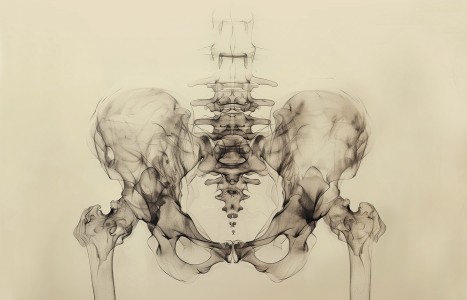People today want convenience, whether it be from their bank, credit card, favorite retail store, or restaurant. They demand it from the companies who hold their loyalty, including their health care providers (you). They don’t want to call and possibly be put on hold, and they want to use an app or schedule an appointment on your website. Here are three reasons your practice can gain by switching to online appointment scheduling.
Florida Spearheads Innovative Medicaid Program
There is no question that state Medicare costs are on the rise. A report released in December 2007 by the National Governors Association and the National Association of State Budget Officers paints a dire picture of state health care budgets. According to the report, Medicaid spending from all funding sources in fiscal year 2007 was estimated to increase by 7.3 percent, compared to a growth rate in FY 2006 of 1.7 percent. In addition, the report states that Medicaid costs total about 22 percent of states' budgets, while overall health care costs make up approximately one-third of spending - the single largest segment of state budgets. On top of this, only California covers acupuncture care via its Medi-Cal program.

In light of this, a pilot program in three Florida counties may offer a glimmer of hope to low-income Medicare patients with chronic pain who are looking for alternatives to traditional medical care. In 2002, the Florida state legislature mandated creation of an integrative-therapies pilot program. The program required a Medicaid waiver to cover the services of licensed acupuncturists and massage therapists. The program was to focus on "quality of care and cost-effectiveness of (an integrated) disease-management initiative."
Chicago-based Alternative Medicine Integration Group (AMI) won the contract to develop and manage the program in three counties in the Tampa Bay area. Since early 2004, AMI has seen up to 500 patients per month out of the approximately 2,500 eligible Medicare patients. Part of what AMI was to measure was whether the integrative therapies had any effect on cost for usual and customary care within the chronic-pain Medicare population. Patients were only eligible if they had one of four chronic pain conditions:
- fibromyalgia
- chronic back pain
- chronic neck pain
- chronic fatigue
Patients in the program were required to have a primary care doctor who wanted to have their patients participate in the program. In order to accomplish this, AMI began meeting with various PCPs to get them to sign a Memorandum of Understanding (MOU). Overall, approximately 60 percent to 65 percent of the eligible doctors signed the form.
AMI went one step further, however, and contacted eligible patients directly via a list supplied by MediPass, Florida's Medicare program. Using a direct-mail and a telephone campaign, AMI eventually brought in about two-thirds of eligible patients, according to Tracy Woolrich, RN, HHP, the holistic nurse in charge of the program.
Under the AMI program, participants have up to two visits per month to either an acupuncturist or a massage therapist. As of November 2007, the program includes 55 massage therapists and 23 acupuncture physicians (licensed acupuncturists in the state of Florida). In addition to acupuncture treatments, AMI also offers support groups, patient literature and condition-specific CDs. In some cases, practitioners may even go out in the field to visit home-bound patients.
The real proof, however, is in patient satisfaction. If patients are not happy with the program or do not see desired results, the potential for any cost savings is lost. One patient, Richard Adams, told his story to the Integrator Blog (www.theintegratorblog.com):
"When I started going to my acupuncturist, I was barely out of my wheel chair. I went from a walker to a cane. Now I can move around without anything. That's how much [my acupuncturist] is doing for me. My GI doc, my podiatrist, my endocrinologist - they all think it's a step in the right direction. They've seen the change. My endocrinologist said: 'Whatever you're doing, keep with it.'"
Adams had also lost 15 pounds and reduced his need for blood pressure medication after 12 to 15 visits to the acupuncturist.
Because patient stories are not enough to convince government agencies, AMI contracted with a researcher to conduct a survey of patients as to their satisfaction with the program.
As another part of measuring outcomes, AMI administered a quality-of-life assessment questionnaire (called the SF-12) during intake, after the first six months and then annually thereafter. In looking at 2005 and 2006, patients reported a 16 percent and 20 percent increase in mental function, respectively. Physical function was increased 20 percent and 24 percent, respectively, over the same time period.
|
|
| My provider helped me reduce my pain level | 93% agree (55% strongly agree) |
| I am satisfied with the care I receive from my IT provider | 93% agree (73% strongly agree) |
| I believe my quality of daily life has improved | 84% agree (43% strongly agree) |
| The IT staff is friendly, courteous | 99% agree (88% strongly agree) |
| Overall I am satisfied with the IT program | 93% agree (71% strongly agree) |
| I will continue to participate in the IT program next year | 96% agree (81% strongly agree) |
| I would recommend the IT program to friends or family members who suffer chronic pain or fatigue | 96% agree (81% strongly agree) |
| *IT = Integrated Therapies |
In addition to data about patient satisfaction, AMI also claims to indeed be reducing costs. Adrian Langford, AMI's vice president told the Integrator Blog:
"Our managed group realized a reduction of (per member per month) costs of over 9 percent while a comparable non-managed population realized an increase of PMPM costs of 15.1 percent. Pharmaceutical savings during the early months of the program indicate a 20% reduction in pres cription drug expenditures. Cohort populations not managed by AMI experienced a 23% increase in pharmaceutical usage over the same time frame."
Given all of these positive data, the state of Florida chose to extend the program last year. Hopefully, other states will look toward Florida for proof that integrated acupuncture services can help Medicare patients at a reduced cost.



